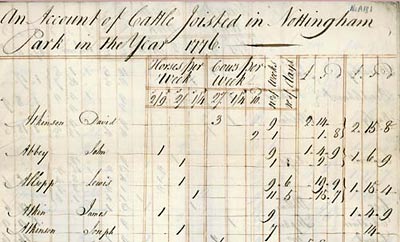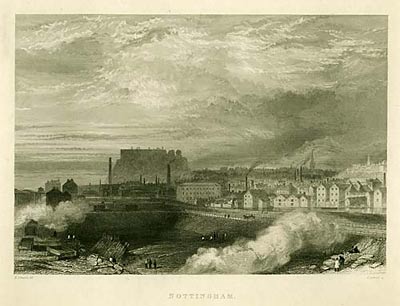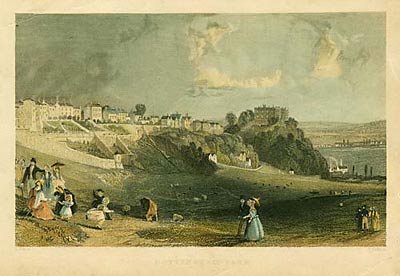The Park and its Purpose
Over the centuries Nottingham Park served many different purposes and its ultimate transformation from medieval deer park to urban residence was not an inevitable development. With different chances of history, it might have become municipal gardens or, more likely, been disposed of industrial or commercial development. At various stages its potential for development in different directions can be seen in the archives.
Though the Park was originally re-stocked with deer by the 1st Duke of Newcastle upon Tyne, by the 1720s the area had been given over for grazing. Accounts record the names of local people renting agistment (grazing) rights in the Park and show the numbers of cows and horses involved. In 1809, 10/6 was paid to an employee for looking after the grazing cows.

Account of horse and cows grazed in Nottingham Park in 1776
(Newcastle Collection, Ne A 181)
By the nineteenth century industrial Nottingham had become overcrowded and filthy, with notorious slum dwellings.

'Nottingham' by Thomas Abiel Prior (1809 - 1886)
As a green oasis in the middle of the town, the Park became its 'lung' - an open space which local people could enjoy. In 1849, The Stranger's Guide noted that it was 'open to the public and is used as a promenade by all classes of society, and a most healthy appendage it is to a populous and closely built town'.
When news of the Duke of Newcastle's planned residential development first began to break, it was greeted with dismay throughout Nottingham.

'Nottingham Park' by Thomas Allom (1804 - 1872)
More: Elegant Elevations
Nottingham Park: From Ducal Estate to Urban Residence home